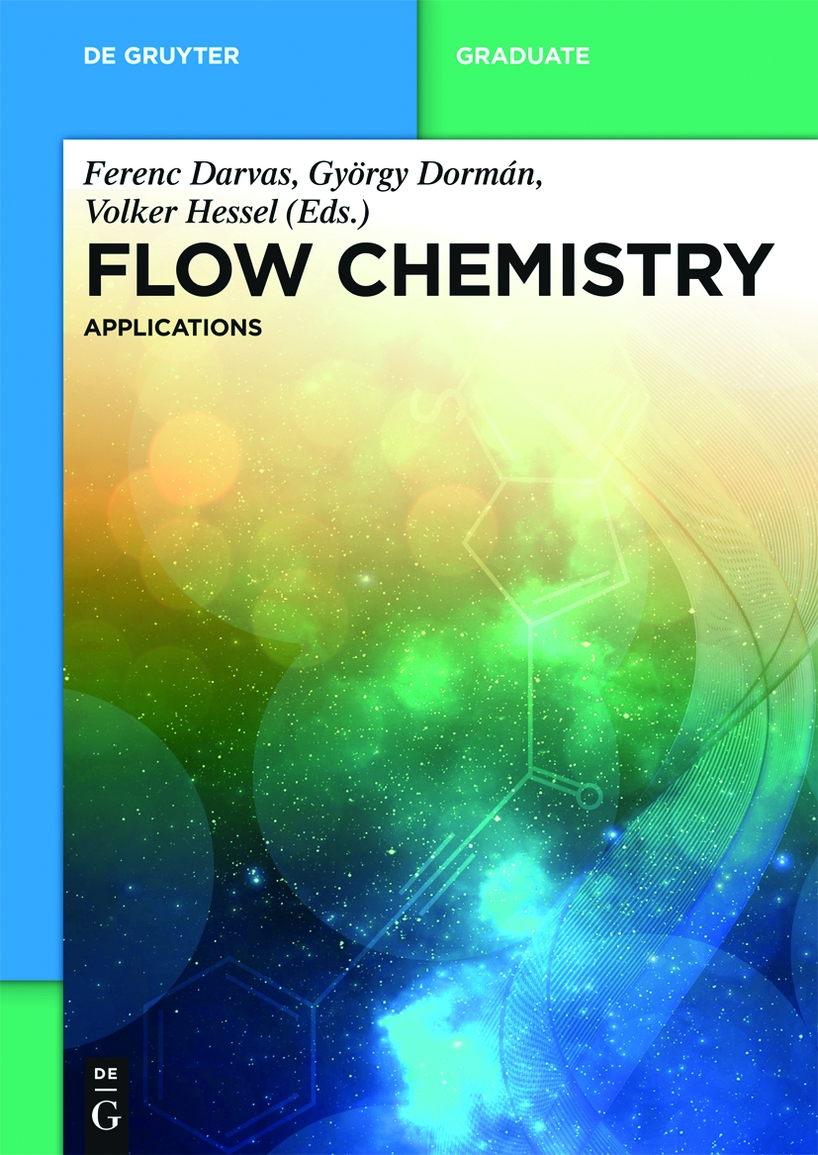Applications by Darvas Ferenc Hessel Volker Dorman György

Author:Darvas, Ferenc,Hessel, Volker,Dorman, György
Language: eng
Format: epub
Publisher: De Gruyter
Published: 2014-09-09T16:00:00+00:00
Genoveva Filipcsei, Zsolt Otvos, Reka Angi, and Ferenc Darvas
6 Flow chemistry for nanotechnology
6.1 Introduction to nanotechnology and graphene technology
6.1.1 Introduction
Flow chemistry has been introduced and was translated into practice during the past years to prepare nanoparticles with unique material characteristics. Nanotechnology is not a single technology; it is a complex and malleable group of diverse technologies and attracting interest for the researchers to create new materials with unexpected physicochemical properties, develop new technologies for the production of the nanomaterials creating new industries across a wide range of fields.
Advanced nanotechnology in the near future will offer new opportunities, for example, development of new or improved materials; applications within the sphere of electronics and IT; advances in health and medicine; improvements in cosmetic products and advances in food technology; developments in products for military, in-line security use, and space exploration; products and processes to improve the environmental management. Many parts of the world can not sustainably support with its attendant environmental and societal impacts. “Nano” manufacturing could provide cheap and green technologies to develop and create novel materials with enhanced characteristics, thus making sustainable twentieth century manufacturing processes.
Nanotechnology has a great potential for a wide range of industrial applications. Industries affected include automotive, electronics, packaging, aerospace, information, communications, pharmaceuticals, food and personal care. Nanotechnology is encountered in everyday materials (polymers, plastics, and rubber, agrochemicals, pharmaceuticals and cosmeceuticals, paper, foodstuffs, fabrics, textiles, and detergents) and technologies (nucleation and precipitation, liquid crystals, chromatography and ion-exchange, flotation, and heterogeneous catalysis).
This chapter gives a brief overview on the history and theoretical background of the nanoparticle production and summarizes the most important approaches of flow chemistry-based technologies currently used for fabrication of different nanomaterials.
Download
This site does not store any files on its server. We only index and link to content provided by other sites. Please contact the content providers to delete copyright contents if any and email us, we'll remove relevant links or contents immediately.
| Automotive | Engineering |
| Transportation |
Whiskies Galore by Ian Buxton(41537)
Introduction to Aircraft Design (Cambridge Aerospace Series) by John P. Fielding(32893)
Small Unmanned Fixed-wing Aircraft Design by Andrew J. Keane Andras Sobester James P. Scanlan & András Sóbester & James P. Scanlan(32579)
Craft Beer for the Homebrewer by Michael Agnew(17938)
Turbulence by E. J. Noyes(7710)
The Complete Stick Figure Physics Tutorials by Allen Sarah(7148)
Kaplan MCAT General Chemistry Review by Kaplan(6603)
The Thirst by Nesbo Jo(6444)
Bad Blood by John Carreyrou(6283)
Modelling of Convective Heat and Mass Transfer in Rotating Flows by Igor V. Shevchuk(6230)
Learning SQL by Alan Beaulieu(6041)
Weapons of Math Destruction by Cathy O'Neil(5842)
Man-made Catastrophes and Risk Information Concealment by Dmitry Chernov & Didier Sornette(5661)
Digital Minimalism by Cal Newport;(5396)
Life 3.0: Being Human in the Age of Artificial Intelligence by Tegmark Max(5193)
iGen by Jean M. Twenge(5166)
Secrets of Antigravity Propulsion: Tesla, UFOs, and Classified Aerospace Technology by Ph.D. Paul A. Laviolette(5002)
Design of Trajectory Optimization Approach for Space Maneuver Vehicle Skip Entry Problems by Runqi Chai & Al Savvaris & Antonios Tsourdos & Senchun Chai(4847)
Electronic Devices & Circuits by Jacob Millman & Christos C. Halkias(4752)
